Cook, bake, eat. Cook, bake eat. Along with energy, a fridge full dwindles into toast, peanut butter, banana. A string of hum, drums until “We need real legit dinner!” Do you cook and not cook in cycles too? When in the non-cook, I’m less satisfied, so hunt cabinets for snack-y contents.
Enter udon noodles.
Ginger, garlic and pepper bring serious spunk, while soy, sesame and rice wine round this recipe full circle, full flavor. Sauce coats vegetables, vegetables and sauce coat noodles—the trifecta—bore banishing.
Lost and Found
Lost – our “to the drop and letter” recipe. But I just saw it? No, it isn’t meant to be, so relax into the familiar make or break. Starting over cuts three ways:
a.) misplace takes us places loss allows
b.) toast, peanut butter, banana… please help me flip this house until we find the recipe
c.) almost doesn’t count, try-try again
Found – a.) Udon noodles. No hum drum, hunt through the house or cabinets, almost or try again… non-existent.
Vegetables and sauce coat cravings, one silky noodle at a time.
Udon Noodles
Thick, slippery, sauce sucking noodles—which to purchase?
Fresh – is best. If adventurous, noodles can be made at home. They can also be purchased at a local asian market. A note about markets or at least ours, a call ahead to see what day they receive fresh helps to avoid an unnecessary trip. Fresh noodles are much thicker than dried. These noodles need to be used in a timely manner and when cooked properly, have a chewy texture but snap when bit. They’re worth every mile and savory sweet bite.
Frozen – can be found in brick-form both at Asian Marts and certain grocery stores. Section out the amount needed and boil.
Dried – While not freshest or gushiest, dried is an important member of the Udon family. A love letter: it’s you we keep for impromptu, pronto stat. We see, admire and thank you for quelling the need.you.now moments.
Crazy good and easy too? Yes!
1.) Combine sauce ingredients.
2.) Cook noodles, while sautéing vegetables.
3.) Add sauce to coat vegetables, then slowly add noodles. Toss gently, mmm, mmm udon.
4.) Taste and season, finding your personal udon savory sweet spot.
Fresh green onions
Crunchy sesame seeds
A bite.
A cup of sunshine.
Easy Udon Noodle Vegetable Stir Fry
Ingredients:
- 8 ounces udon noodles, dried - fresh or frozen
- 1 teaspoon soy sauce
- 1 teaspoon sesame oil
Sauce
- 1/3 cup soy sauce
- 1 Tablespoon oyster sauce
- 2 teaspoons shaoxing wine - or rice wine
- 2 teaspoons sambal oelek - see notes for substitute ideas
Wok
- 2 Tablespoons peanut oil
- 4 cloves garlic - minced
- 1 teaspoon fresh ginger - grated and packed (or powder)
- 2 stems, about 3 cups broccoli - chopped
- 1 large red bell pepper - sliced
- 1/2 onion - halved and sliced
- drizzle sesame oil
- 2 cracks black pepper
- 2 green onions - cut on a bias
- garnish sesame seeds - partial to black
Instructions
- In a small bowl combine soy sauce, oyster sauce, shaoxing wine and sambal oelek. Set aside.
- Prepare noodles according to package directions and drain thoroughly. Add 1 teaspoon soy sauce and 1 teaspoon sesame oil to the noodles, toss, and set aside.
- Heat a wok over medium-high. Add 2 Tablespoon peanut oil. Once glistening, add broccoli and bell pepper. Stir-fry for a few minutes, then add onions, garlic and ginger continue until 3 minutes before desired vegetable tenderness. Drizzle with a small amount of sesame oil and 2 cracks or shakes of black pepper (optional), mix. Add sauce and half the green onions to coat the vegetables. Slowly add drained noodles; using tongs to coat and combine with vegetables. Season to taste. Garnish with more green onions and sesame seeds.
Notes
- Spice - between the ginger and sambal oelek this recipe's on the spicy side. To temper the spice scale one or both.
- Most vegetables can be interchanged, just match cooking times for doneness.
- Sambal Oelek can be found in Asian Food Marts and is sprouting in more grocery stores. This article is good for substitutes though.
- The noodles used this time were Koyo organic "fine" sized. We boiled the water and cooked for seven minutes, then rinsed, adding straight to ready wok-ed vegetables and sauce.
- It's better for noodles to be slightly under than overdone. If you aren't ready to add the noodles directly to the wok, slow the cooking process by rinsing in cool water.
- Adding noodles slowly to the wok helps give your chosen sauce to noodle ratio.
- Noodles can be made ahead and put in the refrigerator for up to two days. If stored, I recommend adding 1/4 teaspoon oil to boiling water when initially cooking.
- My mom portions noodles into freezer bags, then counter defrosts the amount needed in no time flat.
- Want to make udon noodles ahead—easy— prep vegetables and sauce in advance.

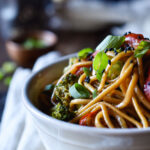




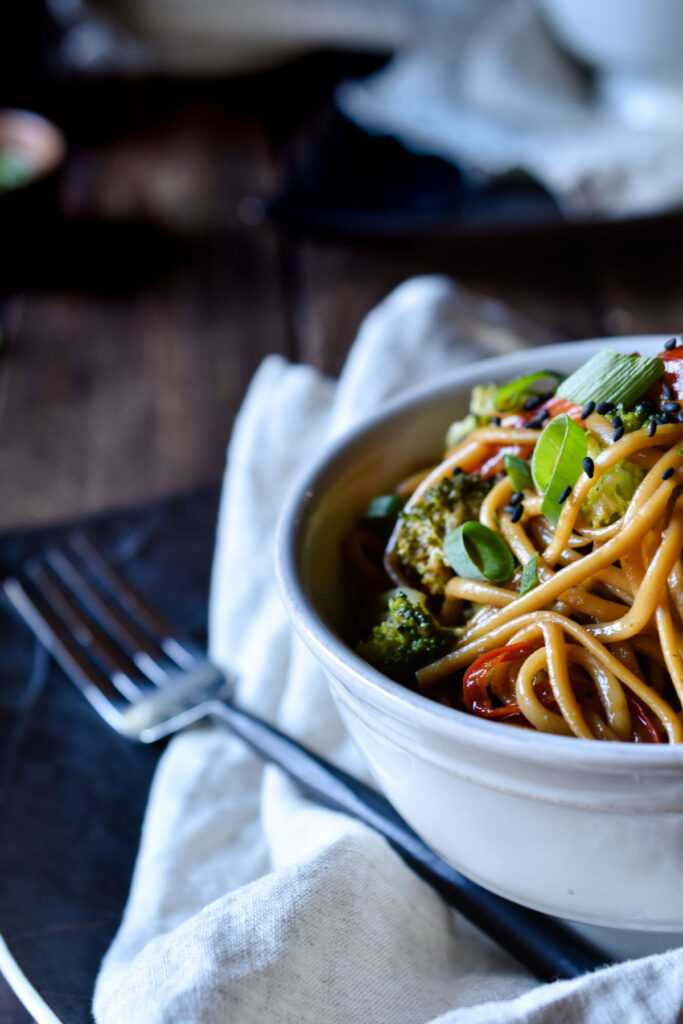
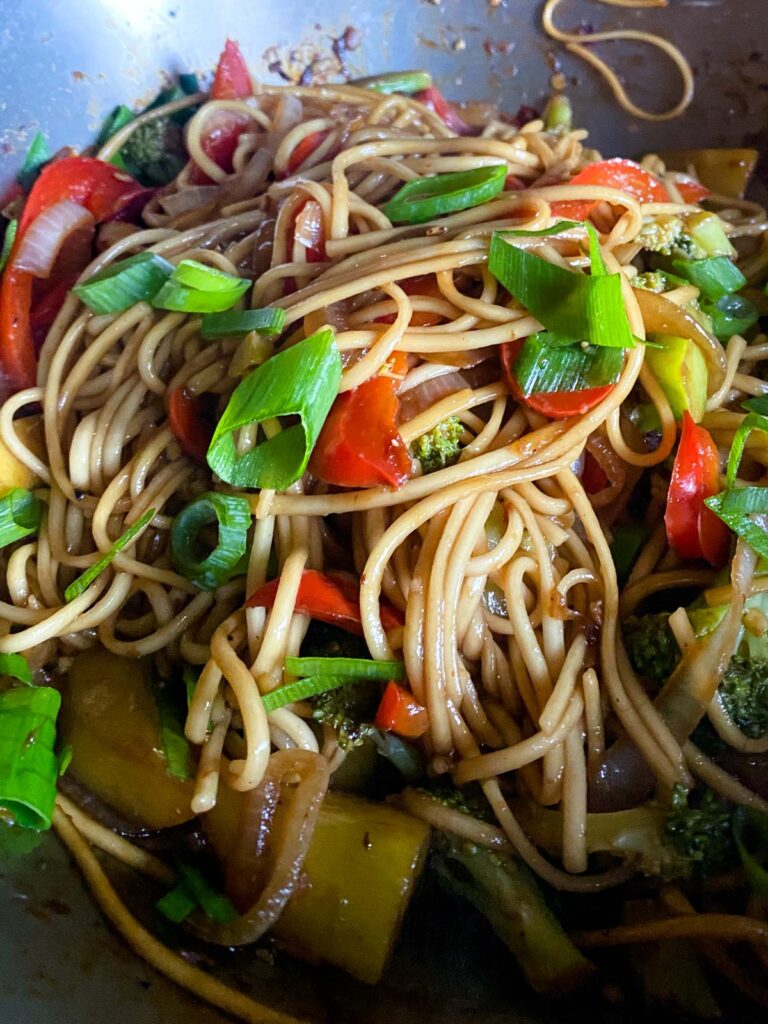
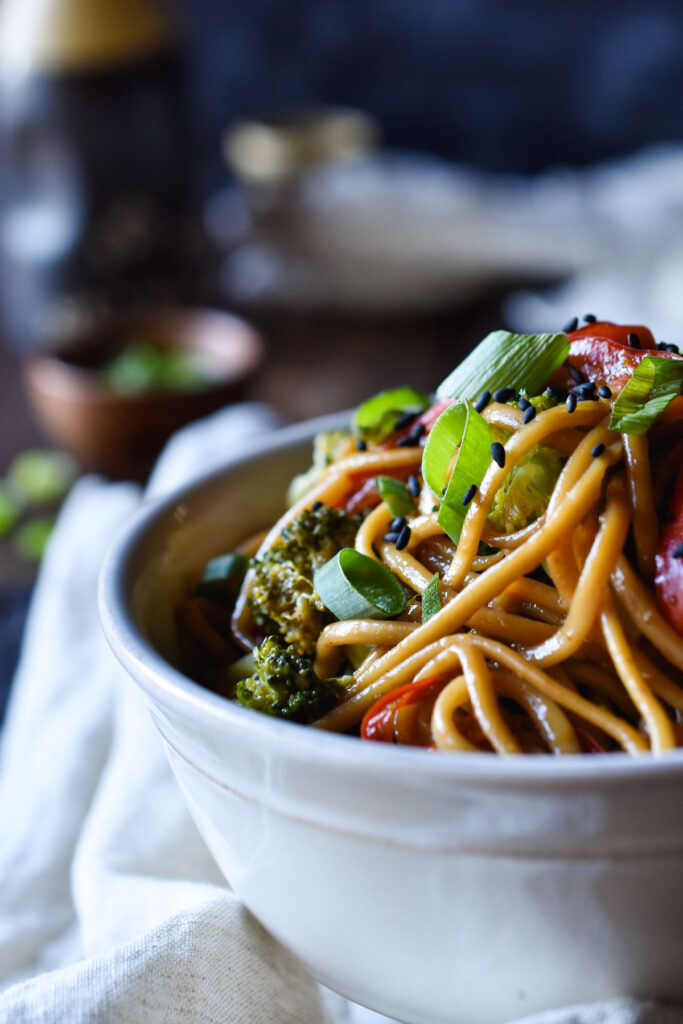
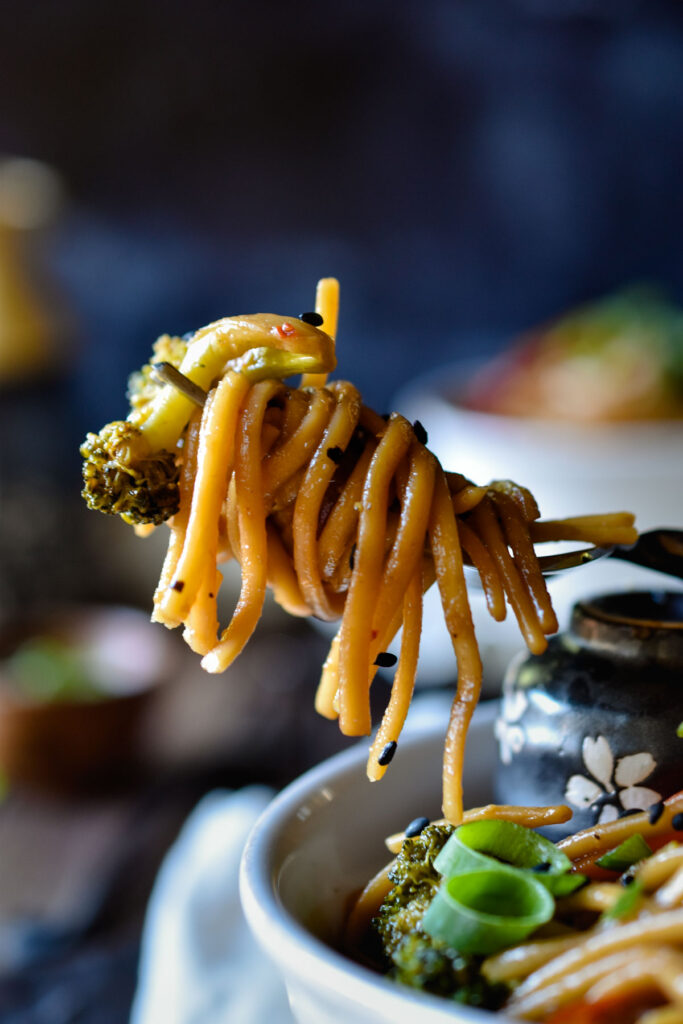



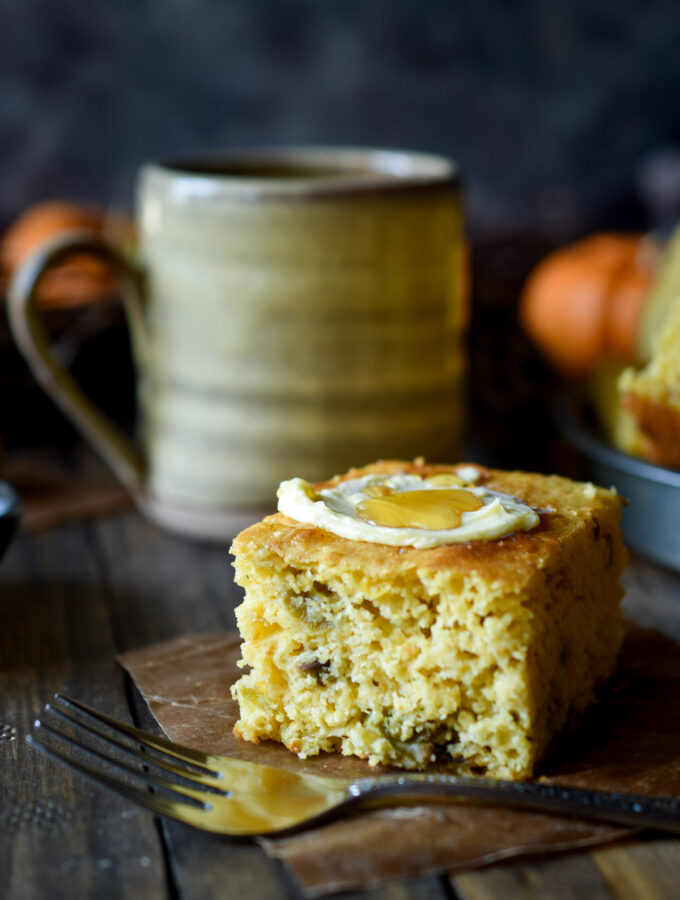
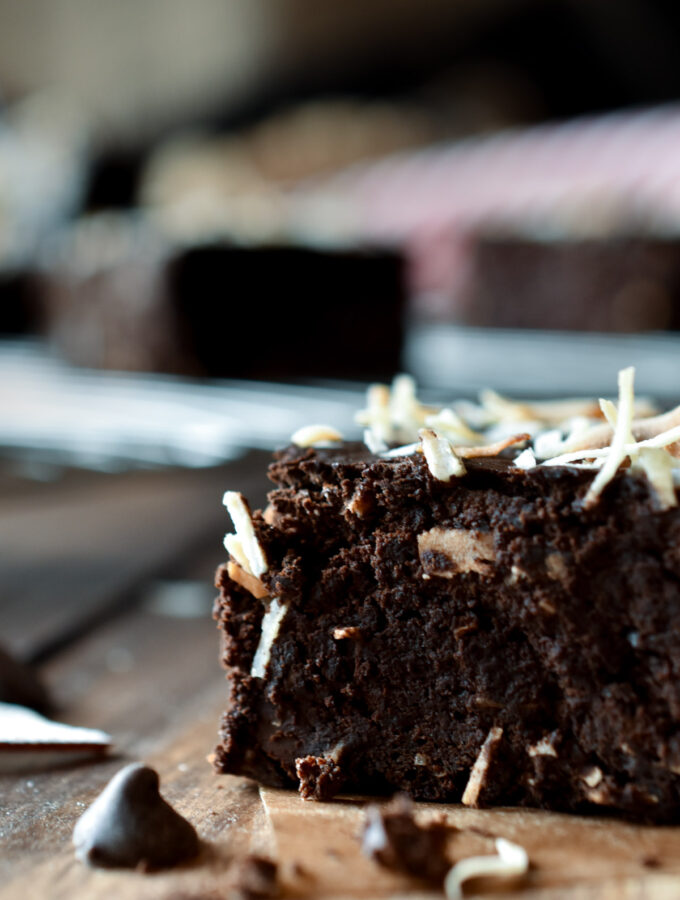

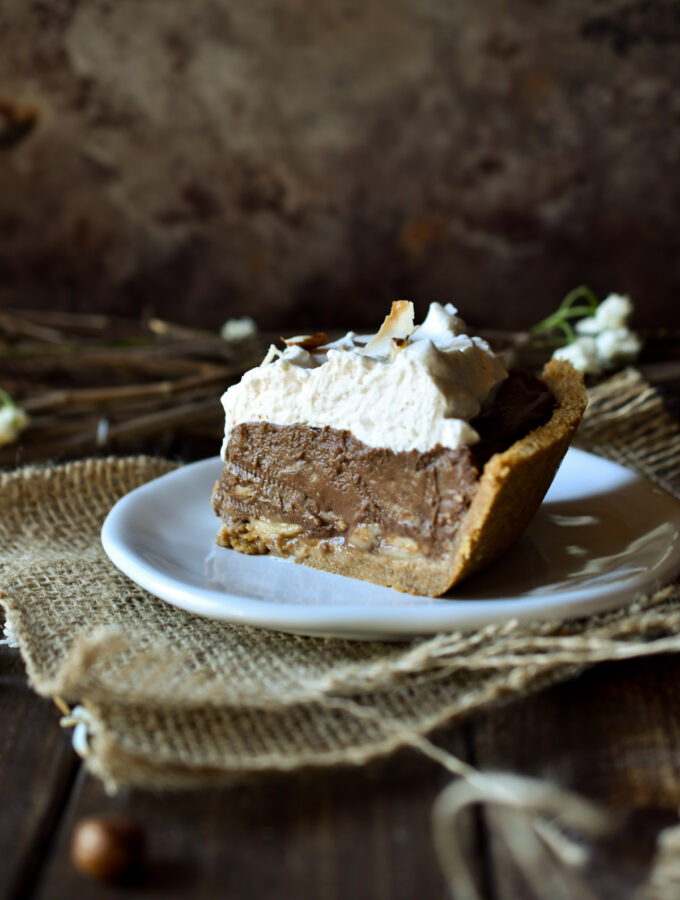
That sure looks good.
Ooh, they sure were. I’m craving all over again.
Thank you ♥️
Yum! Looks good and delicious. I wish you live closer to me.
🥰
Me too. I miss you 😘
Like!! I blog quite often and I genuinely thank you for your information. The article has truly peaked my interest.
Thank you ☺️
Do you have a Youtube channel as well with this kind of content on it? I would love to see this post turned into a longer video if possible. Maybe I can share on it on my website.
Thank you Brian, I have YouTube linked, but it’s mostly for baked goods. Take care.
I am not sure where you are getting your info, but
great topic. I needs to spend some time learning much more or understanding more.
Thanks for wonderful info I was looking for this info for my mission.
Thank you!
Hi there, i read your blog occasionally and i own a similar one and i was just
wondering if you get a lot of spam feedback? If so how do you prevent it,
any plugin or anything you can suggest? I get
so much lately it’s driving me insane so any assistance is
very much appreciated.